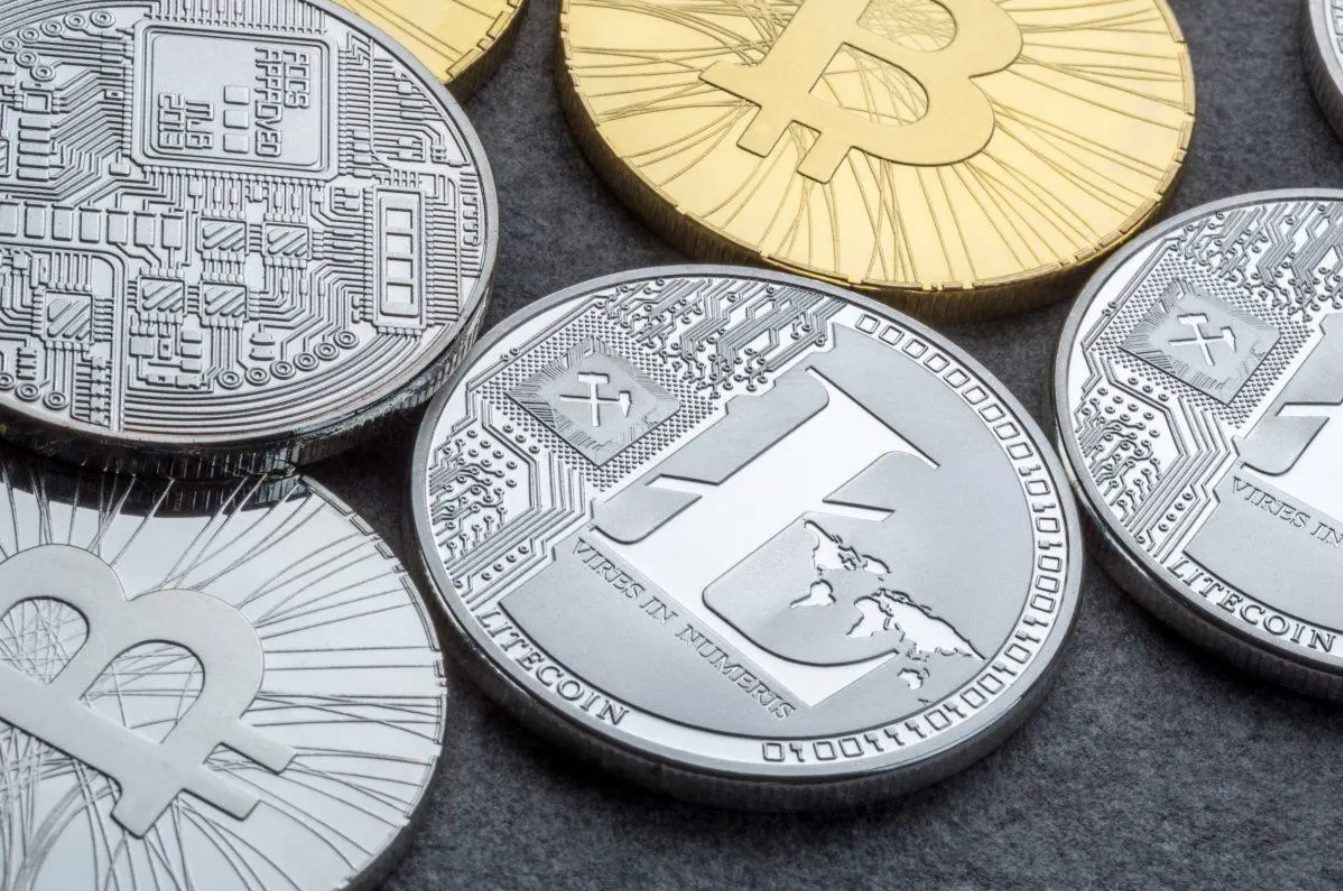Introduction
Welcome to the world of Bitcoin trading, where digital currencies have taken the financial landscape by storm. Over the past decade, Bitcoin has emerged as the most popular and widely traded cryptocurrency, offering exciting opportunities for investors and traders. If you’re eager to delve into the world of Bitcoin trading, this article will guide you through the basics and equip you with the knowledge you need to get started.
Bitcoin, often referred to as a decentralized digital currency, was created in 2009 by an anonymous individual or group of individuals using the pseudonym Satoshi Nakamoto. Unlike traditional fiat currencies such as the US dollar or Euro, Bitcoin operates on a peer-to-peer network and is not controlled by any government or central authority.
Since its inception, Bitcoin has garnered significant attention from investors and traders due to its potential for high returns and its decentralization, which makes it immune to government interference and inflation. Bitcoin trading involves buying and selling Bitcoin in the hope of profiting from its price fluctuations.
As with any form of trading, Bitcoin trading requires knowledge, strategy, and careful planning. By understanding the key principles and strategies involved, you can navigate the volatile Bitcoin market and make informed decisions to maximize your investment returns.
In the following sections, we will delve deeper into the intricacies of Bitcoin trading. We will discuss how Bitcoin trading works, explore the different types of trading strategies, and provide valuable tips for successful trading.
So, grab your virtual backpack and get ready to embark on a thrilling journey into the world of Bitcoin trading. Whether you’re a seasoned trader or a novice exploring this exciting market for the first time, this article will serve as your guide to finding success in Bitcoin trading.
What is Bitcoin?
Bitcoin is a digital currency that operates on a decentralized peer-to-peer network, allowing users to make transactions directly without the need for intermediaries like banks or governments. It was created in 2009 by an anonymous person or group of people using the name Satoshi Nakamoto.
Unlike traditional fiat currencies, such as the US dollar or Euro, Bitcoin is not controlled by any central authority. Instead, it relies on cryptographic algorithms to secure transactions and control the creation of new units. This decentralized nature has made Bitcoin a popular alternative to traditional currencies and has attracted a global community of users and investors.
Bitcoin is based on blockchain technology, which is a distributed ledger that records all transactions made with the currency. This ledger is public and can be viewed by anyone, ensuring transparency and security. Each transaction is verified by network participants known as miners, who use powerful computers to solve complex mathematical puzzles. Once a transaction is verified, it is added to a block, and a new block is added to the chain. This process creates an immutable and tamper-proof record of all Bitcoin transactions.
The supply of Bitcoin is limited to 21 million coins, which are created through a process called mining. Miners validate transactions and secure the network by solving complex mathematical problems. As a reward for their efforts, they receive newly minted Bitcoins.
Bitcoin has several key features that distinguish it from traditional currencies:
- Decentralization: Bitcoin is not controlled by any central authority, making it resistant to censorship and government interference.
- Security: The cryptographic algorithms used in Bitcoin ensure the security and integrity of transactions.
- Anonymity: While Bitcoin transactions are recorded on the blockchain, the identities of the participants are not directly associated with their transactions, offering a certain level of privacy.
- Global Access: Bitcoin can be accessed and used by anyone with an internet connection, making it a truly global currency.
Bitcoin has gained widespread adoption and acceptance, with an increasing number of merchants and businesses now accepting it as a form of payment. Additionally, it has become an attractive investment opportunity, with the potential for significant returns.
Now that you have a better understanding of what Bitcoin is, let’s explore how Bitcoin trading works and the various strategies you can employ to navigate this exciting market.
How Does Bitcoin Trading Work?
Bitcoin trading involves buying and selling Bitcoin with the goal of making a profit from the price fluctuations. To understand how Bitcoin trading works, it’s important to grasp the concept of a cryptocurrency exchange.
A cryptocurrency exchange is an online platform where you can buy, sell, and trade cryptocurrencies, including Bitcoin. These exchanges act as intermediaries that facilitate the transactions between buyers and sellers. They provide a secure and convenient platform for users to trade Bitcoin in exchange for traditional fiat currencies or other cryptocurrencies.
To start trading Bitcoin, you’ll typically need to follow these steps:
- Create an account: Choose a reputable cryptocurrency exchange and create an account. You’ll likely need to provide some personal information and complete verification processes to ensure compliance with regulatory requirements.
- Deposit funds: Once your account is set up, you’ll need to deposit funds into your trading account. You can usually deposit fiat currency, such as US dollars or Euros, or other cryptocurrencies that the exchange supports.
- Place an order: With funds in your account, you can start placing orders to buy or sell Bitcoin. You can choose between market orders, which are executed immediately at the current market price, or limit orders, which allow you to set a specific price at which you want to buy or sell Bitcoin.
- Monitor the market: Bitcoin prices are known for their volatility, so keeping an eye on the market is essential. Use trading charts and indicators to analyze price trends and make informed trading decisions.
- Execute trades: When the price reaches your desired level, you can execute your trade by either buying or selling Bitcoin. The exchange will match your order with a counterparty and facilitate the transaction.
- Manage your trades: As a trader, it’s important to monitor and manage your trades effectively. This involves setting stop-loss and take-profit levels to limit potential losses and secure profits, as well as adjusting your trading strategies based on market conditions.
Bitcoin trading can be conducted 24/7, as cryptocurrency markets operate around the clock. This provides traders with ample opportunities to enter and exit positions at their convenience.
It’s worth noting that Bitcoin trading carries risks, as prices can be highly volatile and unpredictable. Therefore, it’s essential to practice risk management and not invest more than you can afford to lose.
Now that you have a basic understanding of how Bitcoin trading works, let’s explore how to choose a reputable Bitcoin exchange and set up a secure Bitcoin wallet to store your digital assets.
Choosing a Bitcoin Exchange
When it comes to Bitcoin trading, choosing the right cryptocurrency exchange is crucial. The exchange you select will determine the security, functionality, and trading options available to you. Here are some factors to consider when choosing a Bitcoin exchange:
- Reputation and security: Look for exchanges with a solid reputation and a strong track record in terms of security. Research the exchange’s history, user reviews, and security measures, such as two-factor authentication and cold storage of funds.
- Regulatory compliance: Ensure that the exchange is compliant with relevant regulations and has the necessary licenses to operate legally. This helps protect your funds and reduces the risk of fraud or hacking.
- Liquidity: Consider the exchange’s liquidity, which refers to the ability to buy or sell Bitcoin quickly without significantly affecting its price. High liquidity allows for smoother trading and better opportunities to enter and exit positions.
- Trading fees: Examine the fee structure of the exchange, including trading fees, deposit and withdrawal fees, and any other charges. Compare the fees of different exchanges to find the most cost-effective option for your trading volume.
- User interface and trading tools: Assess the exchange’s user interface and the availability of trading tools, such as charts, indicators, and order types. An intuitive and feature-rich platform can enhance your trading experience and help you make more informed decisions.
- Customer support: Consider the level of customer support provided by the exchange. Look for exchanges with responsive customer service that can assist you promptly in case of any issues or inquiries.
- Geographical restrictions: Some exchanges may have geographical restrictions, limiting access to certain countries. Ensure that the exchange you choose allows users from your country to trade Bitcoin.
It’s essential to thoroughly research and compare different exchanges before making a decision. Additionally, consider the specific requirements of your trading strategy and preferences when evaluating exchanges.
Commonly recommended exchanges that cater to beginners include Coinbase, Binance, and Kraken. These platforms are known for their user-friendly interfaces, strong security measures, and a wide range of trading options.
Remember, it’s recommended to use a reputable and trustworthy exchange to ensure the safety of your funds and a seamless trading experience. Once you have chosen an exchange, the next step is to set up a Bitcoin wallet to securely store your digital assets.
Setting Up a Bitcoin Wallet
Before you start trading Bitcoin, it’s important to set up a secure Bitcoin wallet to store your digital assets. A Bitcoin wallet is a software or hardware device that allows you to securely store, send, and receive Bitcoin.
There are several types of Bitcoin wallets available, each with its own level of security and convenience:
- Software Wallets: These wallets can be installed on your computer or smartphone. They provide convenient access to your Bitcoin but are susceptible to malware and hacking if proper security measures are not taken. Popular software wallets include Exodus, Electrum, and Mycelium.
- Hardware Wallets: These wallets are physical devices specifically designed to store Bitcoin securely. They are considered one of the most secure options as they keep your private keys offline. Examples of hardware wallets include Ledger, Trezor, and KeepKey.
- Paper Wallets: A paper wallet involves printing out your Bitcoin private and public keys on a piece of paper. This method is secure as it keeps your keys offline, but it can be cumbersome to use and vulnerable to physical damage or loss.
- Online Wallets: Online wallets, or web wallets, are wallet services provided by exchanges or third-party platforms. While convenient, they are considered less secure as they rely on the security measures of the service provider.
When setting up a Bitcoin wallet, there are a few key considerations to keep in mind:
- Security: Ensure that your chosen wallet offers robust security features, such as multi-factor authentication, encryption, and backup options. Protecting your private keys is paramount to safeguarding your Bitcoin.
- Usability: Choose a wallet that aligns with your technical proficiency and ease of use. Some wallets may have advanced features suitable for experienced users, while others prioritize simplicity for beginners.
- Compatibility: Check if the wallet is compatible with the operating systems or devices you plan to use. Some wallets support multiple platforms, while others are specific to a particular operating system.
- Reputation: Research the wallet provider’s reputation and reviews to ensure its reliability and trustworthiness. Consider the community support and the frequency of updates and improvements.
Once you have selected a Bitcoin wallet, follow the specific setup instructions provided by the wallet provider. This usually involves creating a new wallet, generating a seed phrase or private key, and setting up a strong password for wallet access.
Remember to keep your private keys and seed phrase secure and backed up in multiple locations. Losing access to your keys can result in a permanent loss of funds.
With your Bitcoin wallet set up and secure, you’re now ready to dive into the exciting world of Bitcoin trading. In the next section, we’ll explore the importance of understanding market analysis and various trading strategies.
Understanding Market Analysis
Market analysis plays a crucial role in successful Bitcoin trading. It involves studying and interpreting market data to make informed decisions about when to enter or exit a trade. By understanding market analysis, traders can identify trends, patterns, and potential price movements in the Bitcoin market.
There are two primary types of market analysis that traders commonly use:
- Technical Analysis: Technical analysis involves analyzing historical price data and market statistics to predict future price movements. Traders who use technical analysis rely on various tools and indicators, such as trend lines, moving averages, and oscillators, to identify patterns and trends in the market. These patterns can potentially help traders determine the best time to buy or sell Bitcoin.
- Fundamental Analysis: Fundamental analysis involves evaluating the underlying factors that can influence the price of Bitcoin. This includes examining economic, financial, and geopolitical factors that may impact the demand and supply of Bitcoin. Traders who use fundamental analysis study news events, market trends, and regulatory developments to assess the overall health and potential value of Bitcoin.
Both technical and fundamental analysis have their strengths and limitations. Traders often use a combination of the two to gain a comprehensive understanding of the market.
Technical analysis is particularly useful for identifying short-term price movements and executing timely trades. It focuses on analyzing charts and patterns to spot potential entry and exit points. Traders using technical analysis look for signals and confirmations from various indicators to make trading decisions.
Fundamental analysis, on the other hand, helps traders gain a broader understanding of the long-term prospects of Bitcoin. It considers factors such as market adoption, regulatory developments, technological advancements, and macroeconomic trends that may impact the value of Bitcoin. Traders using fundamental analysis aim to identify undervalued or overvalued market conditions based on the underlying fundamentals.
It’s essential for traders to stay updated with market news, announcements, and events that can impact the Bitcoin market. This can involve following reputable news sources, joining online communities or forums, and participating in social media discussions related to Bitcoin and cryptocurrency.
Remember, market analysis is not a guarantee of success. It is a tool that can help you make more informed trading decisions. It’s crucial to combine market analysis with risk management strategies and to continuously adapt your trading approach based on market conditions.
With a solid understanding of market analysis, you can now explore different trading strategies that are commonly employed in Bitcoin trading. In the next section, we will discuss various types of trading strategies and how to implement them effectively.
Types of Bitcoin Trading Strategies
Bitcoin trading offers a wide range of strategies that traders can employ to capitalize on price movements and generate profits. Here are some popular trading strategies:
- Day Trading: Day trading involves executing multiple trades within a single day to take advantage of short-term price fluctuations. Day traders closely monitor the market and use technical analysis to identify entry and exit points. They aim to capitalize on small price movements and often rely on leverage to magnify their potential gains.
- Swing Trading: Swing trading entails capturing medium-term price swings over a few days to a few weeks. Swing traders analyze the market using both technical and fundamental analysis, looking for trends and patterns that indicate potential reversals or continuation of price movements.
- Scalping: Scalping involves making quick trades to profit from small price differentials. Scalpers aim to take advantage of short-term market inefficiencies and rely on high-frequency trading techniques. They often execute a large number of trades in a single day, aiming to profit from small gains that add up over time.
- Hodling: Hodling refers to a long-term investment strategy where traders buy and hold Bitcoin for an extended period, often disregarding short-term price fluctuations. Hodlers believe in the long-term potential of Bitcoin and aim to benefit from its overall price appreciation over time.
- Arbitrage: Arbitrage involves exploiting price differences between different exchanges or markets to profit from the discrepancy. Traders take advantage of variations in prices by buying low in one market and selling high in another, making a profit from the price differential.
- Automated Trading: Automated trading, also known as algorithmic trading, involves using computer programs or bots to execute trades on behalf of the trader. These programs analyze market data, apply predefined trading strategies, and execute trades automatically, removing the emotional aspect of trading.
Each trading strategy has its own advantages and risks. It’s important to choose a strategy that aligns with your trading goals, risk tolerance, and time commitment. Additionally, it’s crucial to practice proper risk management, set clear entry and exit points, and constantly monitor the market regardless of the strategy being utilized.
Remember that no strategy guarantees profits, and the market can be unpredictable. It’s important to continuously educate yourself, stay updated with market developments, and adapt your strategies as needed.
Now that you have an understanding of different trading strategies, let’s explore the process of buying and selling Bitcoin and how to execute trades effectively.
Buying and Selling Bitcoin
Buying and selling Bitcoin is the core activity of Bitcoin trading. To participate in this exciting market, you need to understand the process of buying and selling Bitcoin effectively. Here’s a step-by-step guide:
- Create an account: Choose a reputable cryptocurrency exchange and create an account. Complete the necessary registration process and verify your identity according to the exchange’s requirements.
- Deposit funds: After your account is set up, deposit funds into your exchange account. You can usually deposit fiat currency, such as US dollars or Euros, or other cryptocurrencies that the exchange supports.
- Choose a trading pair: Bitcoin is typically traded against various other cryptocurrencies or fiat currencies. Select the trading pair that you want to trade Bitcoin against.
- Place an order: There are two main types of orders: market orders and limit orders. A market order is executed immediately at the current market price, while a limit order allows you to set a specific price at which you want to buy or sell Bitcoin. Enter the desired amount and price (if applicable) to place your order.
- Execute the trade: Once your order is placed, the exchange will match it with a counterparty. If your order is a market order, it will be executed instantly. If it is a limit order, it will be executed when the market reaches your specified price.
- Monitor your trade: Keep an eye on your trade as it progresses. You can track the price movements on the exchange’s trading platform, and you may want to set stop-loss and take-profit levels to manage potential losses and secure profits.
- Withdraw funds: When you decide to sell your Bitcoin or withdraw your profits, you can request a withdrawal from the exchange. Follow the withdrawal process, and the funds will be transferred to your chosen wallet or bank account.
It’s important to note that the process may vary slightly depending on the exchange you use. Familiarize yourself with the specific features and functionality of your chosen exchange to ensure a smooth trading experience.
When buying and selling Bitcoin, consider the following tips:
- Do your research: Before making any trades, conduct thorough research and analysis to make informed decisions.
- Start small: If you are new to Bitcoin trading, it’s advisable to start with a smaller amount until you are more comfortable with the process and understand the market dynamics.
- Set a budget: Determine how much you are willing to invest in Bitcoin and stick to that budget. Don’t invest more than you can afford to lose.
- Practice risk management: Set stop-loss and take-profit levels to limit potential losses and secure profits. Develop a risk management strategy that suits your trading style and risk tolerance.
- Stay updated: Keep track of market news and developments that can impact the price of Bitcoin. Stay informed about any regulatory changes, technological advancements, or major events that may affect the market.
By following these guidelines and continuously improving your trading skills, you can navigate the world of buying and selling Bitcoin successfully.
In the next section, we will discuss risk mitigation techniques that can help protect your investment capital in Bitcoin trading.
Mitigating Risks in Bitcoin Trading
Bitcoin trading, like any form of investment, comes with inherent risks. However, there are strategies and techniques you can employ to mitigate these risks and protect your investment capital. Here are some key measures to consider:
- Education and Research: Continuously educate yourself about Bitcoin and the cryptocurrency market. Stay updated with the latest news, market trends, and regulatory developments. Understanding the fundamentals of Bitcoin and the factors that can influence its price will help you make informed trading decisions.
- Set Realistic Expectations: Bitcoin’s price can be highly volatile, and short-term price movements can be unpredictable. Avoid getting caught up in hype and set realistic expectations for your trading activities. Avoid making impulsive decisions based on emotions and seek logical analysis and reasoning.
- Risk Management: Develop a risk management strategy that outlines your maximum acceptable loss and the amount of capital you are willing to risk per trade. Set stop-loss and take-profit orders to automatically limit your losses and secure profits. Adhere to your risk-management plan consistently.
- Diversify Your Portfolio: Don’t put all your eggs in one basket. Diversify your investment by allocating your capital to different cryptocurrencies or even other asset classes. By spreading your risk, you can reduce the impact of sudden price fluctuations in one particular asset.
- Use Stop-Loss Orders: Implement stop-loss orders to automatically sell your Bitcoin if the price reaches a predetermined level. This can help minimize your losses in the event of a sudden price decline.
- Keep Emotions in Check: Emotions can lead to impulsive and irrational trading decisions. Avoid making decisions based on fear or greed. Stick to your trading plan and don’t let short-term market fluctuations shake your long-term strategy.
- Secure Your Bitcoin and Wallet: Ensure the security of your Bitcoin by using reputable wallets and following best security practices. Use hardware wallets, enable two-factor authentication, and regularly update your wallet software. Keep your private keys and seed phrases securely stored offline. Be cautious of phishing attempts and protect your wallet information.
- Select Reputable Exchanges: Choose cryptocurrency exchanges with a proven track record of security and reliability. Research the exchange’s reputation, security measures, and customer support. Check if the exchange has a solid regulatory compliance framework in place.
- Stay Informed and Adapt: Be proactive in staying informed about market trends and changes. Continuously evaluate and adjust your trading strategies to reflect updated market conditions. Stay open to learning and adapting as you gain more experience in Bitcoin trading.
By implementing these risk mitigation techniques, you can increase your chances of trading Bitcoin successfully while minimizing potential losses. Keep in mind that risk can never be completely eliminated, so it’s crucial to be prepared and remain vigilant throughout your trading journey.
Now that you’re equipped with risk management strategies, let’s explore some essential tips for successful Bitcoin trading in the next section.
Tips for Successful Bitcoin Trading
Bitcoin trading can be a rewarding venture if approached with the right mindset and strategy. To increase your chances of success, consider implementing the following tips:
- Start with a trading plan: Develop a clear trading plan that outlines your goals, risk tolerance, and strategies. Stick to your plan and avoid making impulsive decisions based on emotions or market noise.
- Stay informed and keep learning: Stay updated with the latest news, market trends, and developments in the cryptocurrency industry. Participate in trading communities, read reputable sources, and continuously expand your knowledge about Bitcoin and trading strategies.
- Practice risk management: Implement proper risk management techniques, such as setting stop-loss and take-profit levels, diversifying your portfolio, and not risking more capital than you can afford to lose. Prioritize the preservation of your capital over chasing high profits.
- Utilize demo accounts: If you’re a beginner or testing new strategies, consider using demo accounts provided by exchanges or trading platforms. These accounts allow you to practice trading with virtual funds and gain experience without risking real money.
- Focus on long-term trends: Bitcoin’s price can be volatile in the short term, but it has shown a positive long-term trend. Consider investing and trading with a long-term perspective, rather than getting caught up in daily price fluctuations.
- Manage your emotions: Emotions can lead to irrational decisions and cloud your judgment. Stay disciplined, do not let fear or greed drive your trading actions. Stick to your trading plan and avoid making impulsive trades based on emotional reactions.
- Use technical and fundamental analysis: Combine technical analysis, which involves studying price charts and indicators, with fundamental analysis, examining news and market trends. This dual approach can provide a more comprehensive view of the market.
- Choose the right timeframe: Determine your preferred trading timeframe based on your availability and trading strategy. Whether you trade on an intraday basis or prefer longer-term positions, select a timeframe that suits your personality and lifestyle.
- Follow reputable traders and analysts: Pay attention to experienced traders and analysts in the cryptocurrency community. While it’s important to think independently, observing the insights, analysis, and strategies of successful traders can offer valuable perspectives and ideas.
- Regularly review and adapt your strategy: The cryptocurrency market is dynamic, and what works today may not work tomorrow. Regularly evaluate your trading performance, review your strategies, and make necessary adjustments to reflect changing market conditions.
Remember, successful trading takes time and requires experience. It’s important to manage your expectations and embrace the learning process. Stay patient, persistent, and continuously strive to improve your trading skills.
By following these tips, you can enhance your chances of achieving success in Bitcoin trading. Always remember to trade responsibly and only invest what you can afford to lose.
Now that you have a solid foundation of knowledge and strategies, you’re ready to dive into the exciting world of Bitcoin trading. Good luck on your trading journey!
Conclusion
Congratulations! You’ve reached the end of our comprehensive guide to Bitcoin trading. We’ve covered the essential aspects of Bitcoin, how trading works, and various strategies for success. By now, you should have a solid understanding of how to navigate the Bitcoin market and make informed trading decisions.
Remember, Bitcoin trading is not without its risks. The market can be highly volatile, and price movements can be unpredictable. It’s important to approach trading with a disciplined mindset, proper risk management techniques, and a commitment to continuous learning and improvement.
As you embark on your Bitcoin trading journey, consider the following key takeaways:
- Bitcoin is a decentralized digital currency that operates on a peer-to-peer network.
- Choose a reputable Bitcoin exchange that aligns with your trading goals and offers robust security measures.
- Set up a secure Bitcoin wallet to store your digital assets.
- Understand market analysis techniques, such as technical and fundamental analysis, to make informed trading decisions.
- Explore different trading strategies, such as day trading, swing trading, and hodling, and choose the one that best fits your goals and preferences.
- Mitigate risks by practicing proper risk management, staying informed, and adapting your strategies as necessary.
- Implement tips for successful trading, including setting a trading plan, managing emotions, and continuously learning and improving.
Bitcoin trading can be an exciting and potentially lucrative endeavor. However, it’s important to approach it with caution and a commitment to responsible trading practices. Remember that every trade involves risk, and it’s possible to experience losses.
As you continue your trading journey, stay informed about the latest market trends, regulatory changes, and technological advancements. Adapt your strategies, take advantage of learning opportunities, and keep refining your trading skills.
With dedication, perseverance, and a commitment to continuous improvement, you have the potential to thrive in the ever-evolving world of Bitcoin trading. Best of luck on your trading endeavors!

























